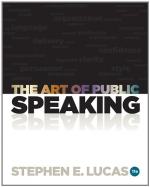All western and central Europe was turned into a crowd by the preaching of the crusaders, and millions of the followers of the Prince of Peace rushed to the Holy Land to kill the heathen. Even the children started on a crusade against the Saracens. The mob-spirit was so strong that home affections and persuasion could not prevail against it and thousands of mere babes died in their attempts to reach and redeem the Sacred Sepulchre.
In the early part of the eighteenth century the South Sea Company was formed in England. Britain became a speculative crowd. Stock in the South Sea Company rose from 128-1/2 points in January to 550 in May, and scored 1,000 in July. Five million shares were sold at this premium. Speculation ran riot. Hundreds of companies were organized. One was formed “for a wheel of perpetual motion.” Another never troubled to give any reason at all for taking the cash of its subscribers—it merely announced that it was organized “for a design which will hereafter be promulgated.” Owners began to sell, the mob caught the suggestion, a panic ensued, the South Sea Company stock fell 800 points in a few days, and more than a billion dollars evaporated in this era of frenzied speculation.
The burning of the witches at Salem, the Klondike gold craze, and the forty-eight people who were killed by mobs in the United States in 1913, are examples familiar to us in America.
The Crowd Must Have a Leader
The leader of the crowd or mob is its determining factor. He becomes self-hynoptized with the idea that unifies its members, his enthusiasm is contagious—and so is theirs. The crowd acts as he suggests. The great mass of people do not have any very sharply-drawn conclusions on any subject outside of their own little spheres, but when they become a crowd they are perfectly willing to accept ready-made, hand-me-down opinions. They will follow a leader at all costs—in labor troubles they often follow a leader in preference to obeying their government, in war they will throw self-preservation to the bushes and follow a leader in the face of guns that fire fourteen times a second. The mob becomes shorn of will-power and blindly obedient to its dictator. The Russian Government, recognizing the menace of the crowd-mind to its autocracy, formerly prohibited public gatherings. History is full of similar instances.
How the Crowd is Created




